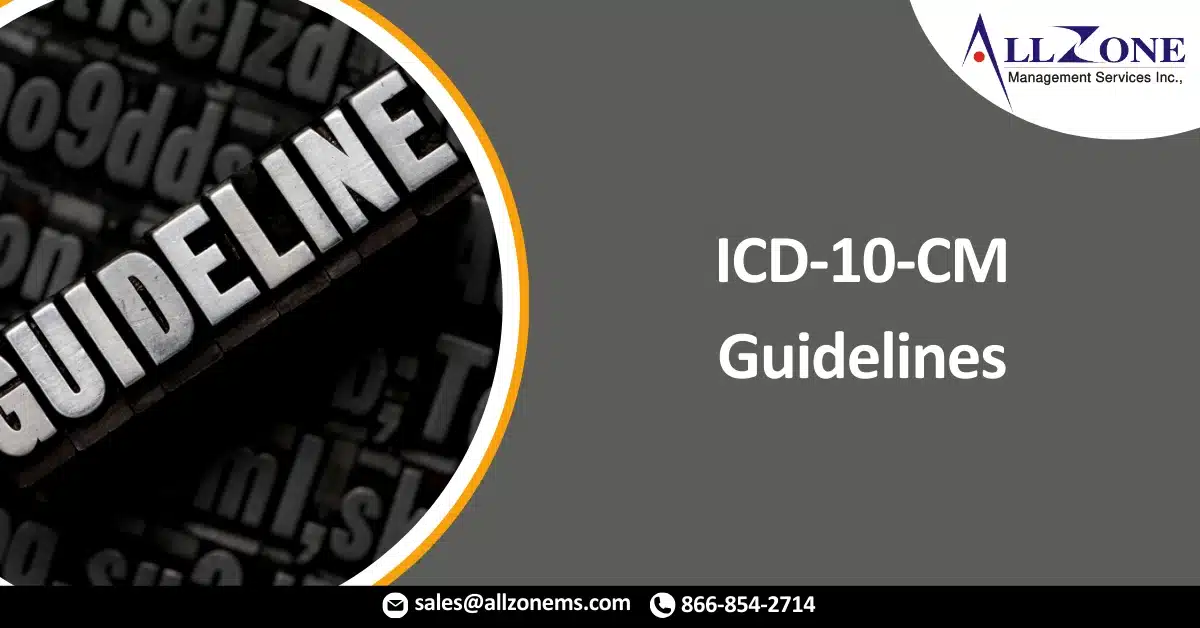The Centers for Disease Control and Prevention (CDC) released the ICD-10-CM Official Coding and Reporting Guidelines for the 2022 fiscal year (FY) on July 12th. The latest edition comprises 115 pages, which marks an 11-page reduction compared to the FY 2021 version. These updated guidelines will come into effect for discharges and visits from October 1, 2021 onward.
Noteworthy changes are highlighted in bold text, with underlined elements reflecting repositioned content from the FY 2021 version. Italics denote revisions made to headings. A preview of the alterations in Section I (Conventions, General Coding Guidelines, and Chapter-Specific Guidelines) is provided for sections A (Conventions) and B (General Coding Guidelines).
An addition has been made to the title of Chapter 21, subsection B-Z codes, which now encompasses “Indicate a Reason for Encounter” and includes the phrase “or Provide Additional Information about a Patient Encounter.”
In Section B (General Coding Guidelines), No. 2 (Level of Detail in Coding) has been expanded to state that “diagnosis codes are to be used and reported at their highest number of characters available” and to the “highest level of specificity documented in the medical record.” No. 13 (Laterality) introduces a paragraph emphasizing the necessity for specificity in laterality, advising against the use of unspecified codes.
In cases of conflicting or unclear documentation, healthcare providers should be consulted. No. 14 (Documentation by Other than the Patient’s Provider) has introduced a definition of “clinician” and a list of exceptions where healthcare professionals outside the patient’s primary provider can be employed.
Updates indicate that body mass index (BMI), coma scale, NIHSS, blood alcohol level, and codes for social determinants of health (SDoH) should be reported solely as secondary codes. A new paragraph in No. 18 (Use of Sign/Symptom/Unspecified Codes) underscores the significance of consistent and comprehensive documentation in the medical record.
These are some of the modifications found in the Official Coding and Reporting Guidelines for ICD-10-CM FY 2022. A more thorough exploration of these changes, along with chapter-specific alterations, will take place during the 2022 Inpatient Prospective Payment System (IPPS) Summit: Master ICD-10-CM Changes on August 17.
A survey conducted on July 13 through Talk Ten Tuesdays Listeners Survey posed the question, “which Official Coding and Reporting Guidelines are more impactful to you?” The results unveiled the following breakdown:
- ICD-10-CM: 89 percent
- ICD-10-PCS: 5 percent
- Does Not Apply: 7 percent
Based on these survey results, it’s evident that the alterations in the ICD-10-CM guidelines hold significant importance for the audience. It’s important to note that these guidelines and code adjustments will be further elucidated in an upcoming edition of the American Hospital Association’s (AHA’s) Coding Clinic.
Furthermore, it’s worth mentioning that a fresh version of the FY 2022 Conversion file for ICD-10-CM was made available on June 30. This resource aids users in transitioning between previous code versions and the current version, facilitating both forward and backward code translation.
The Centers for Disease Control and Prevention (CDC) released the ICD-10-CM Official Coding and Reporting Guidelines for the 2022 fiscal year (FY) on July 12th. The latest edition comprises 115 pages, which marks an 11-page reduction compared to the FY 2021 version. These updated guidelines will come into effect for discharges and visits from October 1, 2021 onward.
Noteworthy changes are highlighted in bold text, with underlined elements reflecting repositioned content from the FY 2021 version. Italics denote revisions made to headings. A preview of the alterations in Section I (Conventions, General Coding Guidelines, and Chapter-Specific Guidelines) is provided for sections A (Conventions) and B (General Coding Guidelines).
An addition has been made to the title of Chapter 21, subsection B-Z codes, which now encompasses “Indicate a Reason for Encounter” and includes the phrase “or Provide Additional Information about a Patient Encounter.”

